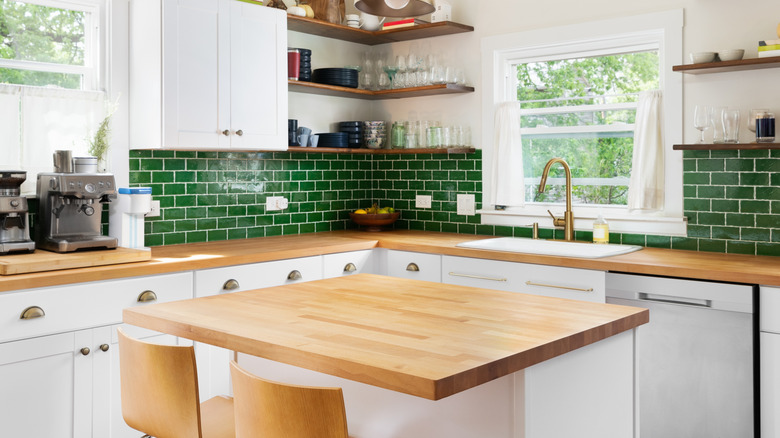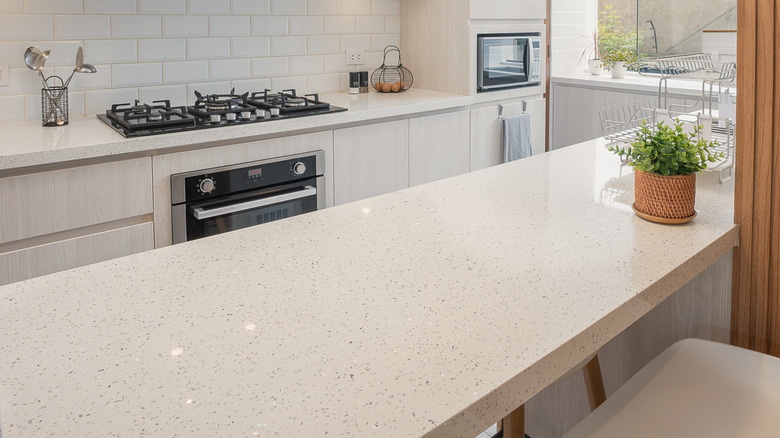Want To Decoupage Your Butcher Block Countertop? Here's What You Need To Know
We may receive a commission on purchases made from links.
Butcher block is a popular countertop material made by fusing together straight cuts of hardwood in a vertical formation. If you have them in your kitchen but you feel like they need a bit of a refresh, you may want to consider an unexpected DIY: decorating them with decoupage. There are many creative ways to use decoupage around your home, including your kitchen countertops.
The name of this papering technique originates from the French word "découper," which simply means "to cut up." One of the best things about decoupage is that it can be totally personal to you — it is the art form of reusing old comics, upcycling magazines, or even repurposing extra paper napkins to give your surface a brand new look. As you can imagine, the possibilities are endless with decoupage. Plus, it's a great way to express your own personality by displaying sentimental memorabilia in your home in a fun and unique way.
How to decoupage butcher block
The first step to completing this DIY is to collect a decent pile of old magazines or newspapers that are going to be enough to cover your countertop. If you want to stick to a kitchen theme, consider using pages out of a vintage cookbook or your food shopping receipts for a fun and relevant twist. Once you've got a curated selection, lay out your papers on top of your butcher block countertop. It may take some time to achieve the design you want, but once you're pleased with your layout, trim the edges and double-check that you're happy with the placement.
Paint an even layer of glue onto your countertop (Mod Podge Waterbase Sealer is fantastic and only costs around $15), attach the paper, and paint another layer of glue on top. Use a squeegee to remove any air bubbles that appear — a top tip is to start in the middle and work your way out. Repeat this process until the whole surface is covered. The final step is to sand the edges and add a layer of polyurethane to seal the design.
Can you decoupage other counter types?
The great thing about decoupage is that it can be applied to pretty much any surface, including glass, wood, metal, and some plastics. A common kitchen countertop material is laminate, and decoupage can be applied easily and smoothly to this without any concerns. While it's likely that you can also decoupage over natural stone countertops with similar results — you can decoupage rocks, after all — there's a high chance you'll end up permanently altering the material below. High-porosity stone like limestone and marble will absorb liquid, and Mod Podge is no exception.
In terms of the durability of decoupage, which is important when you're covering a high-traffic area like your countertops, there's no need to worry as long as you seal it correctly with polyurethane. It's worth being careful when preparing any food by using a chopping board to protect your countertop, but this is something you would probably do anyway. If for some reason you do end up with a scratch or tear in your design, it's easy to patch it up by layering another piece of paper on top and following the steps of the initial process.

